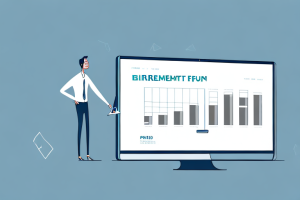In today’s fast-paced world, planning for retirement is essential to ensure a comfortable and financially secure future. With the rising cost of living and increasing life expectancy, it becomes crucial to determine how much one needs to retire on $100,000 a year. This article will provide you with an in-depth understanding of the importance of financial planning for retirement and guide you through the process of achieving this income goal.
Understanding the importance of financial planning for retirement
Financial planning for retirement is not a luxury or an option; it’s a necessity. It involves assessing your current financial situation, setting realistic retirement goals, and taking proactive steps to achieve them. By strategically managing your finances and investments, you can secure a steady income of $100,000 annually during your retirement years. Planning ahead will allow you to enjoy your golden years without financial stress and uncertainty.
One key aspect of financial planning for retirement is understanding the potential risks and challenges that may arise. These can include inflation, market volatility, and unexpected expenses. By considering these factors and incorporating them into your financial plan, you can better prepare for any unforeseen circumstances and ensure that your retirement savings will be sufficient to meet your needs.
Another important consideration in retirement planning is the role of healthcare expenses. As you age, healthcare costs tend to increase, and it’s crucial to factor in these expenses when determining your retirement savings goals. By estimating your potential healthcare costs and including them in your financial plan, you can better protect yourself against unexpected medical bills and ensure that you have adequate funds to cover your healthcare needs in retirement.
Breaking down the $100,000 annual income goal for retirement
When aiming for a $100,000 annual income in retirement, it’s crucial to break down this goal into manageable steps. Consider factors such as inflation, lifestyle expectations, and investment returns. Understanding these factors will help you determine the amount of savings and investment growth required to secure a comfortable retirement income. By breaking down the goal, you can create a roadmap to achieving financial independence in retirement.
One important factor to consider when breaking down the $100,000 annual income goal for retirement is the impact of taxes. It’s essential to account for the potential tax liabilities on your retirement income. Understanding the tax implications can help you make informed decisions about your savings and investment strategies. Additionally, consulting with a financial advisor or tax professional can provide valuable insights into optimizing your retirement income and minimizing tax burdens.
Assessing your current financial situation and setting realistic retirement goals
Before embarking on your retirement planning journey, it’s vital to assess your current financial situation. Determine your existing assets, liabilities, and monthly income and expenses. This assessment will provide a starting point for setting realistic retirement goals. Keep in mind factors such as your age, expected retirement age, and desired lifestyle. Based on your financial assessment, you can establish a clear retirement goal, such as retiring on $100,000 a year.
Determining your retirement expenses and lifestyle expectations
In order to retire on $100,000 a year, you must carefully consider your retirement expenses and lifestyle expectations. Assess your current spending patterns and estimate the costs for housing, healthcare, transportation, travel, and other essential and discretionary expenses. By having a clear understanding of your retirement expenses, you can determine the annual income required to maintain your desired lifestyle during retirement.
Exploring various retirement investment options to achieve a $100,000 annual income
One crucial aspect of retiring on $100,000 a year is exploring different retirement investment options. This includes traditional retirement accounts, such as 401(k)s and IRAs, as well as other investment vehicles like stocks, bonds, mutual funds, and real estate. Each option has its own risks and rewards, and it’s important to diversify your portfolio to minimize risk and maximize returns. By understanding these investment options, you can choose the most suitable ones to help you achieve your income goal.
Calculating the required savings and investment returns to retire on $100,000 a year
To retire on $100,000 a year, you need to calculate the required savings and investment returns. Consider factors such as your expected retirement age, life expectancy, and average inflation rate. These factors will help you determine how much you need to save and the investment returns required to generate a sustainable income throughout retirement. Utilize retirement calculators and consult with a financial advisor to perform accurate calculations tailored to your specific circumstances.
Considering inflation and adjusting your retirement savings plan accordingly
Inflation is an often-overlooked factor that can significantly impact your retirement savings. As prices rise over time, the purchasing power of your money decreases. It’s essential to consider inflation when planning for retirement and adjust your savings plan accordingly. By factoring in inflation, you can ensure that your savings will keep up with the rising cost of living, preserving the purchasing power of your $100,000 annual income in retirement.
Strategies for maximizing your retirement income to reach the $100,000 goal
There are several strategies you can employ to maximize your retirement income and reach your $100,000 goal. One such strategy is delaying Social Security benefits, which can increase the amount you receive each month. Another approach is optimizing tax efficiency by strategically withdrawing from different retirement accounts. By exploring these strategies and others, you can make the most of your retirement income and increase your chances of achieving your goal.
The role of Social Security benefits in supplementing your retirement income
Social Security benefits play a significant role in supplementing your retirement income. The amount you receive depends on factors such as your earnings history, age when you start claiming benefits, and whether you continue working during retirement. By understanding how Social Security benefits work and incorporating them into your retirement plan, you can enhance your overall income and move closer to your $100,000 annual income goal.
Evaluating the potential risks and uncertainties in achieving a $100,000 annual income in retirement
While striving to retire on $100,000 a year, it’s essential to evaluate the potential risks and uncertainties that may affect your goal. These risks can include market volatility, unexpected healthcare expenses, and longer life expectancy. By identifying and understanding these risks, you can adjust your retirement plan accordingly, ensure appropriate risk management, and maintain financial stability throughout your retirement journey.
Tips for reducing expenses and maintaining a comfortable retirement lifestyle on $100,000 a year
Retiring on $100,000 a year requires careful budgeting and expense management. Implementing lifestyle adjustments, such as downsizing your home, cutting unnecessary expenses, and exploring cost-saving measures, can help you maintain a comfortable retirement lifestyle within your income threshold. By incorporating these tips into your retirement plan, you can stretch your $100,000 annual income and enjoy a fulfilling retirement.
Investing in tax-efficient retirement accounts to optimize your income and minimize taxes
Optimizing your retirement income involves investing in tax-efficient retirement accounts. Options like Roth IRAs and Health Savings Accounts (HSAs) can provide tax advantages and reduce your overall tax liability during retirement. By understanding the tax implications of different retirement accounts and utilizing them effectively, you can optimize your income and minimize taxes, allowing you to make the most of your $100,000 annual income in retirement.
Creating a diversified portfolio that balances risk and return for long-term financial security
When planning for retirement, it’s crucial to create a diversified portfolio that balances risk and return. By diversifying your investments across different asset classes, such as stocks, bonds, and cash equivalents, you can spread the risk and potentially enhance returns. This strategy helps ensure long-term financial security while mitigating the impact of market volatility on your $100,000 annual income goal.
Exploring part-time work or side hustles to supplement your retirement income
Supplementing your retirement income with part-time work or side hustles can provide an additional source of revenue to reach the $100,000 target. Consider leveraging your skills and expertise to earn extra income during retirement. Part-time work or side hustles not only help you maintain financial stability but also provide a sense of purpose and fulfillment during your retirement years.
Seeking professional financial advice to ensure a successful retirement plan on $100,000 a year
Given the complexities involved in retirement planning, seeking professional financial advice can greatly enhance your chances of creating a successful retirement plan. A financial advisor can help assess your unique circumstances, provide personalized recommendations, and guide you towards making informed decisions. With their expertise, you can navigate the intricacies of retirement planning and significantly increase your likelihood of retiring on $100,000 a year.
Case studies: Real-life examples of individuals who retired successfully on $100,000 a year
Examining real-life case studies of individuals who have retired successfully on $100,000 a year can serve as inspiration and provide practical insights. These examples shed light on different strategies, investments, and lifestyle choices that have led to a comfortable retirement. By studying their experiences, you can learn valuable lessons and apply them to your own retirement journey.
Common Mistakes to Avoid When Saving for Retirement with a $100,000 Annual Income Goal
While planning for retirement, it is crucial to be aware of common mistakes that can hinder your progress towards a $100,000 annual income goal. These mistakes can include inadequate savings, over-reliance on certain investments, failing to adjust for inflation, or not regularly reviewing and adjusting your retirement plan. By learning from these common mistakes, you can avoid pitfalls and stay on track to reach your desired income goal.
The Impact of Early Retirement or Delayed Retirement on Reaching the $100,000 Target
When considering retirement, the timing of your decision can significantly impact your ability to retire on $100,000 a year. Early retirement may require more aggressive savings and investment strategies, while delayed retirement offers additional years to accumulate savings. By carefully evaluating the implications of early or delayed retirement, you can adjust your financial plan accordingly and optimize your chances of reaching the $100,000 target.
Monitoring your progress towards retiring on $100,000 a year and making adjustments as needed
Retirement planning is an ongoing process that requires diligent monitoring and periodic adjustments. Regularly review your progress towards retiring on $100,000 a year and make any necessary changes to your savings, investment strategies, and lifestyle choices. By staying proactive and adaptable, you can ensure that you remain on track and maintain a realistic path towards achieving your retirement income goal.
In this list, subheadings have been written with this principle in mind to enhance discoverability by search engines while ensuring they are informative and relevant to the article topic
In conclusion, retiring on $100,000 a year is an achievable goal with proper financial planning and management. By understanding the importance of financial planning, assessing your current financial situation, calculating your retirement expenses, exploring various retirement investment options, and incorporating strategies to maximize your retirement income, you can work towards securing a comfortable and financially secure retirement. Stay proactive, seek professional advice when needed, and adjust your plan as necessary to ensure that you achieve your $100,000 annual income goal and enjoy a fulfilling retirement journey.



